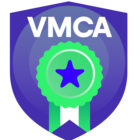More and more companies are depending totally of their ICT infrastructure (on-premises, private cloud, hybrid cloud, public cloud) …
Ransomware and hackers are more popular than ever…
Therefore one of the most important things is that the company has a solid backup strategy, so we can fall back at those in case of disaster or being impacted by ransomware or hackers.
You can find very often the 3-2-1 rule. I suggest every customer or company to even go a step further : apply the 3-2-1-1-0 rule !
3 : Maintain at least 3 copies of your data
By three copies, I mean that in addition to your primary data, you should also have at least two more backups.
Why?
The chance that something is going wrong with 3 devices at the same time is a lot smaller than with 2 devices, especially when the primary backup is often situated close to the primary data. In case of a disaster the primary data and primary backup could be gone. The secondary backup is often situated somewhere else and could be the solution in case of such a disaster.
If using VEEAM as a backup-product, a backup-job and a backup-copy job is a perfect solution.
2 : Store the backups on 2 different media
It is not recommended to store the two copies of your backup on the same type of storage media. Better is to store one of the copies on internal hard disk drives and the other copy on removable storage media (tapes, external hard disk drives, cloud-storage, …).
Alternatively the primary backup is put on internal hard disk drives of a physical server and the secondary backup is put on internal hard disk drives of a NAS where the hard disk drives on both systems are of a different brand, size and type.
1 : Store at least 1 of the copies at an offsite location
It is highly recommended to keep at least one copy of the backups away from the physical location where the primary data and primary backup is located. It’s not a good idea to keep that second copy at the same physical location. Imagine a disaster as fire, waterflood, earthquake, … all could be destroyed : primary data, primary backup and secondary backup!
If the company has no remote or branch office, an alternative could be saving a copy at a service provider in a private cloud or saving a copy in the public cloud. If using VEEAM as a backup-product, VEEAM Cloud Connect at a certified Service Provider is a perfect option.
Another alternative can be the choice of using tapes and transport them away regularly from the company to store them in a safe location.
It’s also recommended to protect those backups with an encryption key!
1 : Store at least 1 of the copies offline
It is highly recommended to keep at least one copy of the backups offline. With offline I mean no more connection (network, USB, tape must be ejected, …) anymore with the ICT infrastructure. If a hacker has access to your environment, everything with an online connection can be impacted. Therefore it’s strongly recommended to have a backup offline so a hacker has no access to it. Such an offline backup is also called an airgapped backup.
It’s also recommended to protect those backups with an encryption key!
Examples : rotating external USB-disks, tapes, object storage with immutability
An alternative can be backups to the cloud with insider protection (like VEEAM Cloud Connect with insider protection)
0 : Be sure to have verified backups without errors
Backups are only as good as they are being verified. First of all the backups needs to be monitored on a daily basis. Are there any errors : solve them as soon as possible. There should be no errors, backups are to important to leave at that. Secondly, at recurring intervals you need to perform restore tests : restore your data from the backups and verify if everything is as it should be.
If you take into account with this 3-2-1-1-0 rule, it can help organizations navigate the riks of ransomware and keep service levels high without data loss.








